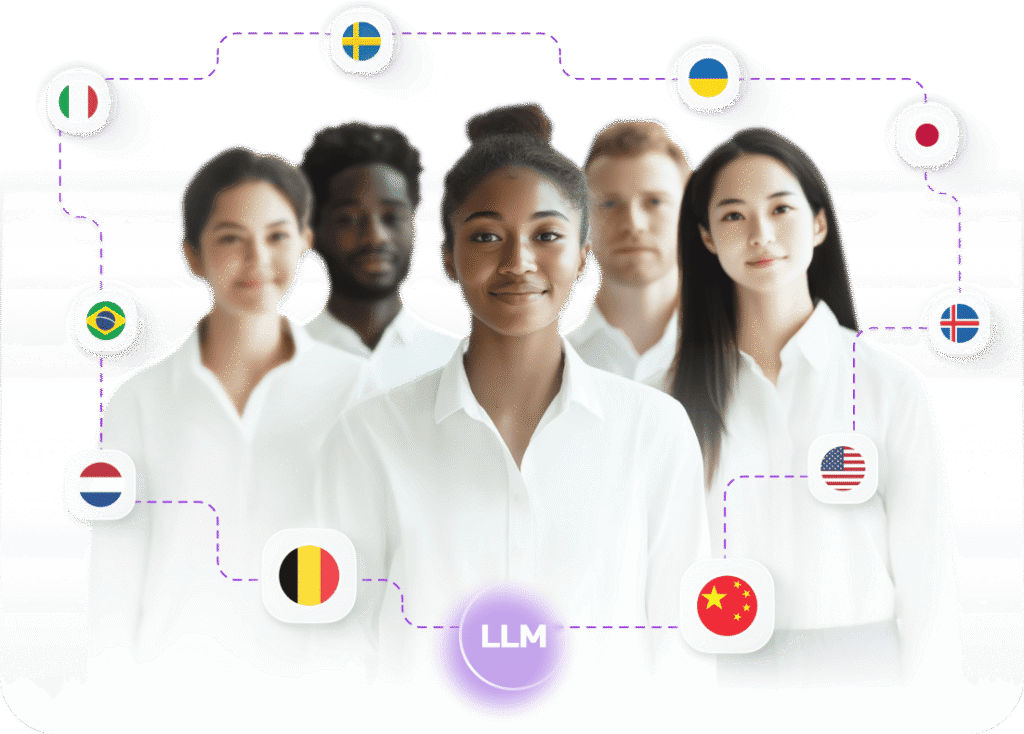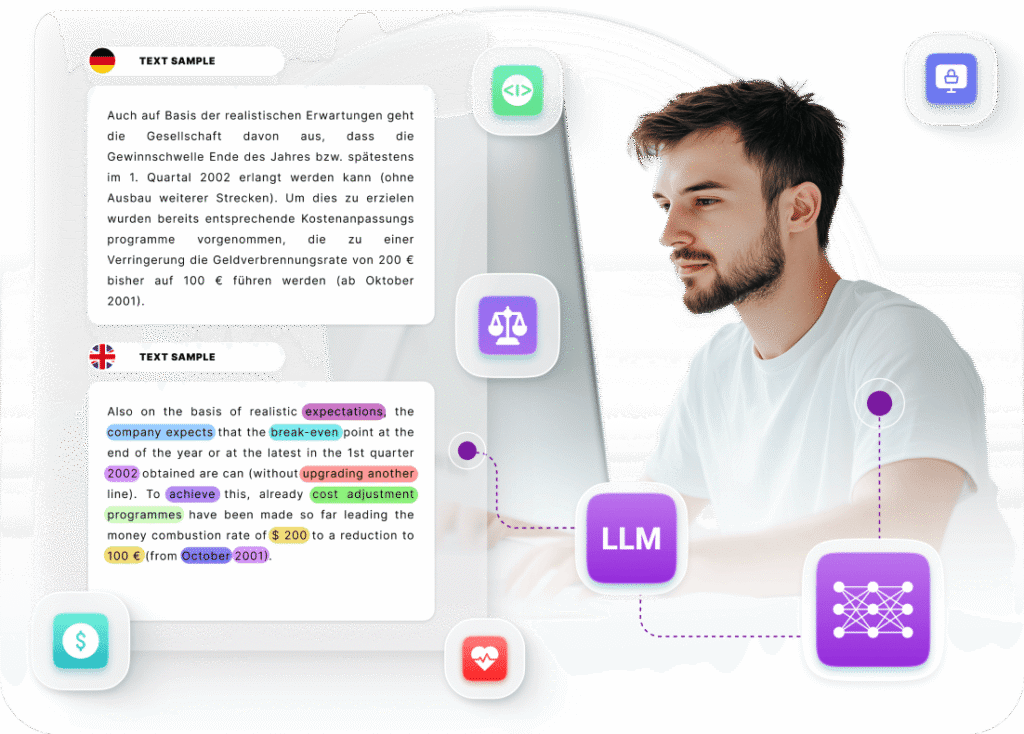In an increasingly interconnected world, language should never be a limitation. From global customer service to cross-border compliance and international e-commerce, the ability to understand and generate content in multiple languages is essential for modern businesses. That’s where Multilingual LLM solutions come into play—transforming the way companies interact with global audiences through language-aware large language models. By leveraging Multilingual LLM technologies, organizations are no longer bound by the constraints of monolingual AI systems. They gain the ability to scale operations, personalize customer experiences, and analyze text data across languages with a level of nuance that was previously impossible. Let’s explore how this powerful capability works—and why it’s rapidly becoming a cornerstone of global AI strategies.

What Is a Multilingual LLM?
A Multilingual LLM (Large Language Model) is a type of artificial intelligence that understands, processes, and generates human language in multiple languages with high accuracy. These models are trained on vast multilingual datasets, enabling them to perform complex NLP (Natural Language Processing) tasks such as text summarization, sentiment analysis, named entity recognition, document classification, and conversational AI across different languages. What makes multilingual models exceptional is not just their ability to switch between languages, but their ability to understand the cultural and contextual nuances embedded in each one. Unlike simple translation tools, Multilingual LLMs can reason across languages, maintaining coherence and relevance even when working with non-parallel texts.
Why Multilingual Capabilities Are Business-Critical Today
The demand for language-inclusive AI is surging. Multinational enterprises are engaging diverse customer bases across continents, and they need tools that understand more than just English. For example, imagine a global e-commerce company that operates in over 20 countries. Using a Multilingual LLM, the business can automate customer inquiries, analyze feedback, and create localized product descriptions in each target market—without hiring a team of translators or risking quality loss through machine translation. The same applies in healthcare, where understanding a patient’s feedback in their native language can be critical, or in legal sectors, where contracts need multilingual scrutiny for compliance purposes. The strategic edge is clear: the more languages your AI can handle fluently, the more markets you can serve accurately and responsibly.

Multilingual LLMs vs. Traditional NLP Tools
Traditional NLP tools often rely on rule-based or single-language training, making them brittle in real-world, multilingual settings. They’re effective within limited boundaries, but fall short when tasked with cross-lingual understanding. Multilingual LLMs, on the other hand, leverage advanced architectures—like transformers—to process multiple languages simultaneously. They aren’t just translating; they’re interpreting. This results in better contextual performance, richer semantic understanding, and smoother integration with global AI systems. Whether it’s chatbots handling Spanish, French, or Arabic inquiries or classification engines sorting German and English documents simultaneously, multilingual LLMs provide a unified, intelligent solution.
The Role of Annotation and Data Curation
Behind every powerful Multilingual LLM is a massive multilingual dataset—and the quality of this dataset depends on expert data annotation. Annotating text in multiple languages requires native-level fluency, contextual expertise, and consistency across cultures. Companies that specialize in building LLM solutions, such as Mindy Support, rely on multilingual annotation teams trained to handle the complexity of diverse linguistic frameworks. They create the labeled data that helps models learn, generalize, and improve over time. Without this human-led foundation, even the best architectures fall short of business expectations.

Expanding Language Models Through Generative AI
The evolution of Generative AI has significantly impacted the development of language models. By incorporating generative capabilities, multilingual LLMs can now not only interpret but also produce high-quality, native-level responses, summaries, and content in dozens of languages. If you’re exploring the broader impact of these advancements, Generative AI offers a powerful lens. It enhances multilingual systems with creativity, flexibility, and contextual adaptation—especially important in marketing, education, and content creation. The result is a dynamic AI that doesn’t just translate but communicates like a native speaker.
Real-World Applications Across Industries
Multilingual LLMs are already delivering tangible results across multiple sectors. In customer support, AI agents powered by multilingual models resolve queries in the user’s preferred language, increasing satisfaction and reducing churn. In finance, multilingual sentiment analysis helps banks understand how global clients feel about specific services. In e-learning, multilingual content generation expands educational access across geographies. Even in government and NGOs, where multilingual citizen communication is essential, LLMs are simplifying how services are delivered at scale. Every industry benefits when AI becomes truly language-aware.

Challenges to Consider When Implementing Multilingual LLMs
Despite their advantages, building and deploying Multilingual LLM systems is not without challenges. Data scarcity in low-resource languages can affect model performance. Cultural biases may be embedded in training data, which can lead to skewed outputs. Performance across languages is also uneven—models often perform better in English than in languages with limited training samples. These challenges highlight the need for continuous dataset refinement, robust evaluation, and region-specific optimization. Enterprises considering multilingual solutions should partner with providers experienced in both AI technology and human-led annotation to ensure long-term success.

The Future: Global AI with Local Intelligence
As AI continues to evolve, the future will demand even deeper multilingual capabilities. From real-time cross-lingual search to voice-driven AI that speaks with local dialects, the next generation of Multilingual LLM systems will do more than interpret—they’ll understand context, culture, and intent. Businesses that adopt these models early will lead in international growth, user trust, and digital inclusivity. The direction is clear: if you want your AI to serve the world, it needs to speak the world’s languages—fluently, naturally, and responsibly.
Final Thoughts
Multilingual LLM technology is reshaping how organizations connect with their audiences globally. It’s not just a language tool—it’s a business enabler. From customer support to compliance, from content creation to analytics, the ability to process multiple languages accurately and intelligently is becoming a non-negotiable asset. As the AI race intensifies, those who prioritize multilingual infrastructure today will be tomorrow’s global leaders.
- 0shares
- Facebook0
- Pinterest0
- Twitter0


